How To Milk A Difficult Goat Using Goat Hobbles
If you have a goat that is difficult to milk, then this guide on how to use goat hobbles will get everyone happy in the milk stand once again.
Hobbles are a great tool to have for how to raise dairy goats that milk safely on the stand. How to use goat hobbles to help control a jumpy goat on the milk stand.
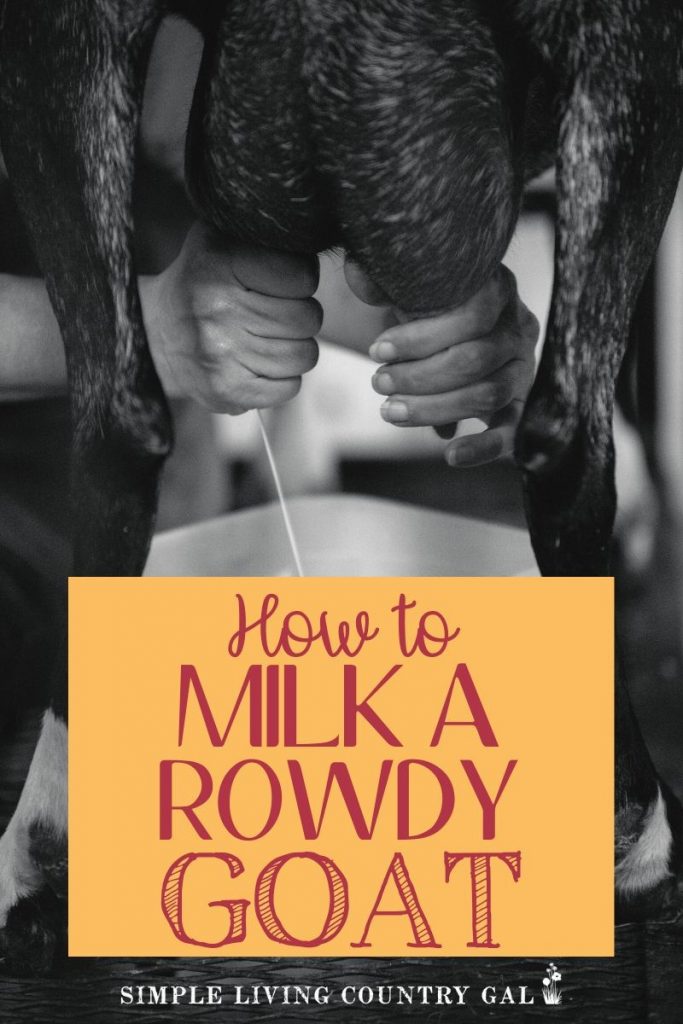
Nothing is worse than trying to milk a goat that is kicking and jumping. You try so hard to keep your cool, yet your goat has other things in mind, and standing still to be milked is definitely not one of them.
Luckily, there is something you can do to help with a jumpy goat. A tool that is gentle and effective. They are called goat hobbles, and they work on any level of stubborn goat saving your sanity on the milk stand.
A few years ago, my patience was tested when I had one goat in particular who simply hated to be milked. Well, let’s back up just a bit; she hated to have her udder touched in any way. Don’t get me wrong, she was a sweet and loving goat. She would always walk over to me to be petted, but as soon as I went to milk her, she would fight me tooth and nail.
That goat’s name is Wren. She is the Alpha female of our goat herd, and ironically enough, she is afraid of her own shadow.
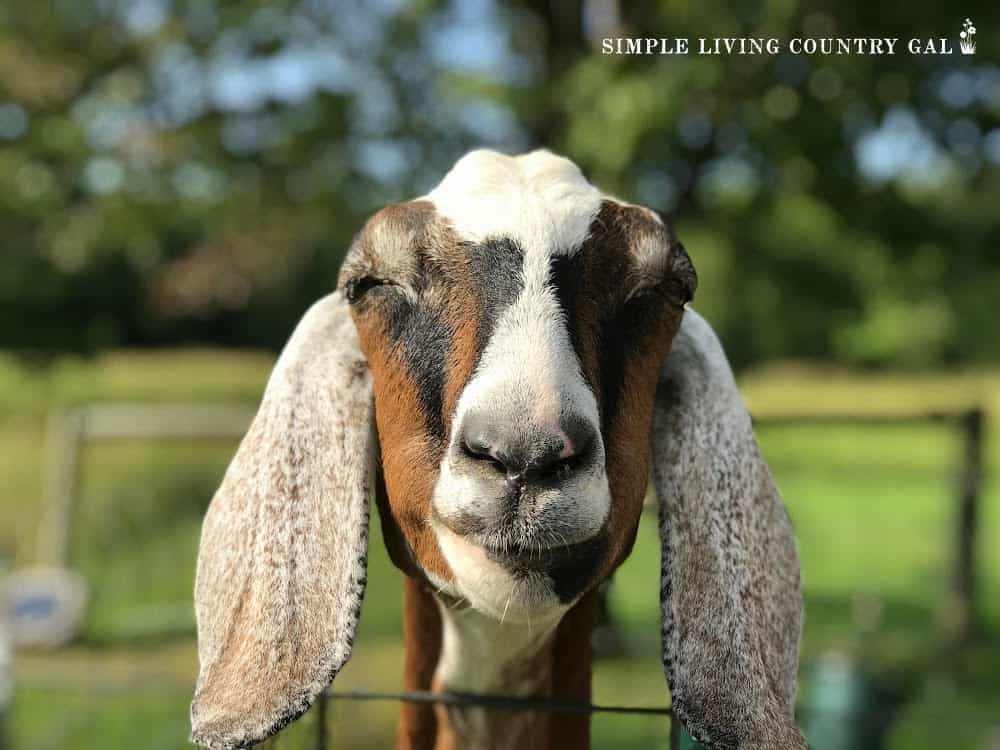
One day I put a black floor mat on the milk stand to give the does more traction and to prevent slipping. That first morning, I walked Wren up to the stand, and just before we got to it, she stopped dead in her tracks. She took one look at that black mat and ran off the other way!
No matter how many times I tried, she refused to step up onto the milk stand. At first, I had no idea why, but then I realized it was that darn black mat. So, I removed the mat and tried again. It took a couple of attempts, but she finally did jump up onto the milk stand.
As I said before, Wren is a sweet goat, but a complete handful to milk. She basically resembles an Irish step dancer bouncing all over the stand when I milk her.
I used to fill her feed bowl with treats, then milk her as quickly as possible so I could finish before she ate. The reason was that as soon as she was done eating, she would kick her legs, hitting the milk bucket in the process.
After a few weeks of milking fast, I decided I needed to find a solution that would work for both of us. I did some research and found some information on Goat Hobbles. I had never heard of them before, and I was very intrigued.
What are goat hobbles?
Goat hobbles are a thick canvas strap that has a loop at each end that is adjusted with velcro. They are a safe and gentle binding tool for your goat’s hind legs that help to hold them in place. They do not hurt them in any way and work great to keep a safer environment while milking.
How do hobbles keep a goat from kicking?
Goat hobbles attach around the upper back legs of your goat restricting movement just enough so they cannot kick out. They can still step around allowing them to feel more comfortable, but kicking is much more difficult for them. This means you will have enough time to move the milk bucket before it can get knocked over.
Can you make goat hobbles?
There are several ideas for making DIY goat hobbles available online, and to be true to my DIY self, I admit I did try them out. Even though the homemade hobbles were a success for the person who made them, my goat Wren wriggled out of those babies faster than lightning.
I finally bit the bullet and purchased a pair online. After quite a bit of searching, I found these goat hobbles on Amazon, and I really like them. The straps are wide and thick, and the velcro is sturdy enough to keep the doe from kicking out easily, yet are easy to use and adjust.
Weaver Leather unisex adult Livestock Deluxe Cow Hobble, Black, Cow US

I have to stop here and say that those goat hobbles were the best money I have EVER spent on anything.
Ever.
How to milk a difficult goat using goat hobbles
Hobbles are simple, just a wide velcro strap that you wrap around each of the doe’s upper legs. Once secured into place, the hobbles will keep your goat from kicking and jumping, keeping both you and her safe on the milk stand.
The funny thing is, Wren never fought me, putting the hobbles onto her legs, which completely took me by surprise.
The first day I used them, I put them on without any fuss from her. After they were in place she did try to kick and jump, but she quickly found that she was unable to do so and settled in to eat without any more shenanigans.
Where do you put goat hobbles?
When milking a difficult goat, it is important to ensure the hobbles are on the goat’s upper back legs. If you put them on the lower leg, your goat will simply kick them off. By placing them up high, you will keep her legs secure yet still allow her some movement.
This helps her to remain calm once the hobbles are secured into place.
The side view shows the placement a bit better. If you find the goat hobbles get in the way of your milking, you might need to adjust them a bit or adjust how you milk. If your goat’s teats are longer, you can easily move them in front of or behind the hobbles.
If your goat’s teats are smaller, you might need to adjust how you milk. At first, it feels awkward to have the strap in the way, but after a few times, you will find they are quite easy to milk around.
Since we began using the goat hobbles with Wren, she has been milking like a champ.
SLCG Pro Tip: Like anything that has to do with goats, it is super important to keep your cool, especially when milking. Goats are very emotional animals and remember things for quite a while. One smack from you on the milk stand might cost you weeks of retraining. If you find yourself getting frustrated, take a breath, shake it off, and remember your goats are simply animals that get easily spooked and are not doing anything intentionally.
Other uses for goat hobbles
Another great use for Goat Hobbles is if you have a doe who refuses to let her kids nurse. I had one such doe that stopped nursing her young kids out of nowhere. I tried holding her, but since I have large Nubian goats, holding is simply not an option. I learned quickly that if a large breed goat does not want to do something, forcing them will not cut it.
I then got the idea to put her up on the milk stand with some feed to use as a distraction. I placed the goat hobbles on her upper legs, and she allowed her kid to nurse all the way until he was finished. Those hobbles were a lifesaver and kept me from having to bottle-feed that little buckling.
A closer view shows how easily she wears them, and Dusty (her little buck) is able to nurse with no problems at all.
Are goat hobbles humane?
Absolutely! Not only are they humane, but the goat hardly notices them at all. The velcro is secure enough to hold your animal in place yet not so binding that you can’t get them off quickly in an emergency.
The velcro allows you to put them on quickly and adjust the tightness so the animal is comfortable at all times. It is very important to use them on the upper leg to be effective. If you put them onto the lower leg, she will toss them off with a kick.
SLCG PRO TIP: If you have a particularly jumpy goat, you will need to get her used to the tearing sound of the velcro strap. Just open and shut them a few times while she is around you until the sound no longer startles her. Again, taking small steps slowly is the best advice I can give any new goat owner.
Easier maintenance
Another use for goat hobbles is when you need to do routine maintenance.
If you have a goat that hates to have her udder shaved, her body clipped, or other routine work done, you can use the hobbles. This will save you so much frustration and reduce the risk of possible injury. By securing the back legs, you will be able to do most of your routine work without too much trouble.
Goat Hobbles will not only keep both you and your doe safe but help you to milk a difficult goat.
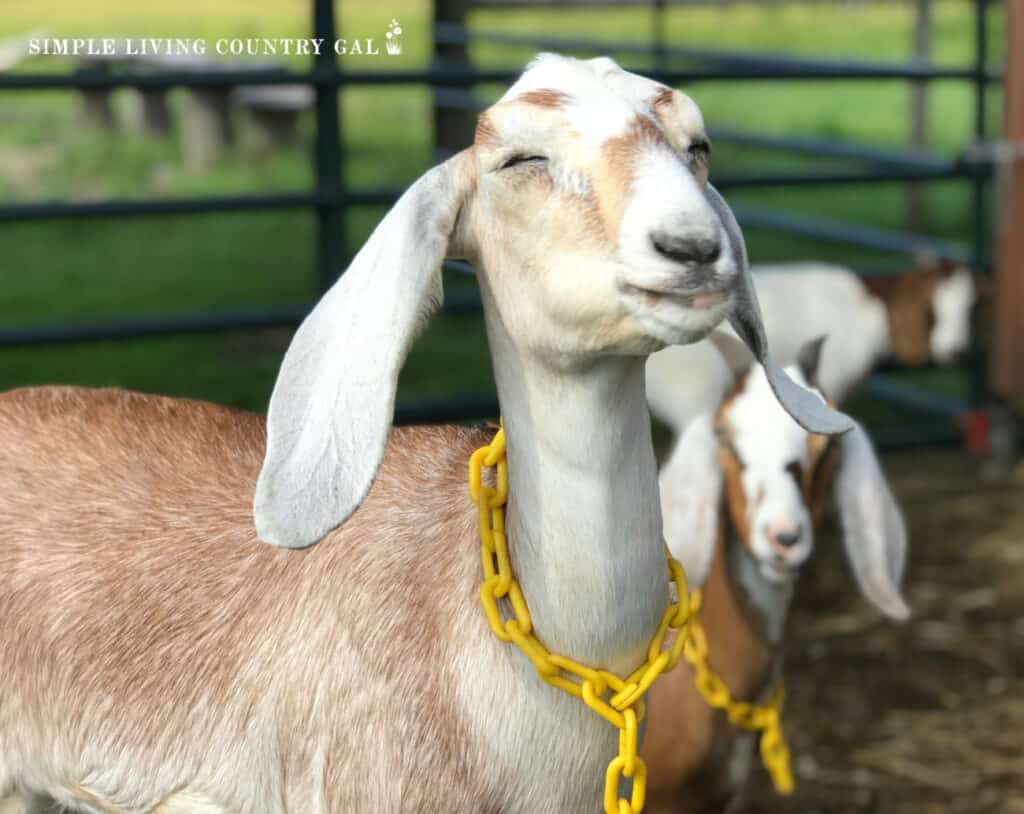
One final tip, make sure the hobbles you choose will fit your goat. The hobbles mentioned in this post are for a large full-breed Nubian goat and may not fit a dwarf goat or mini goat. Read the specifications before you buy to make sure.
If you have a doe that is anything like my Wren or Sparrow, I HIGHLY suggest a small investment into Goat Hobbles, especially if you want to milk a difficult goat.
More Goat Care Resources:
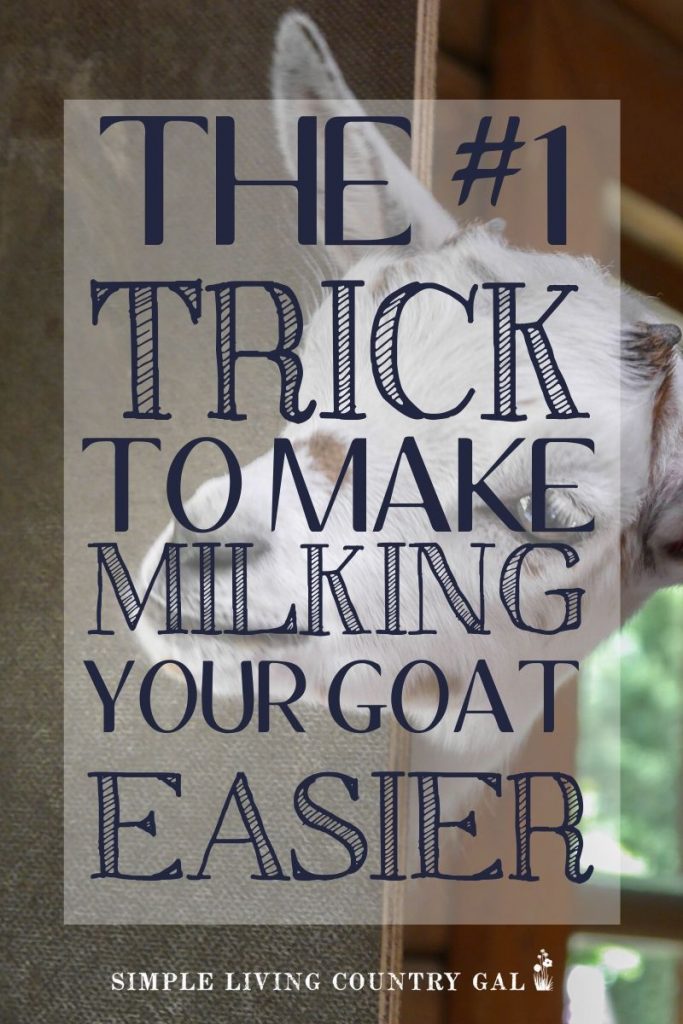





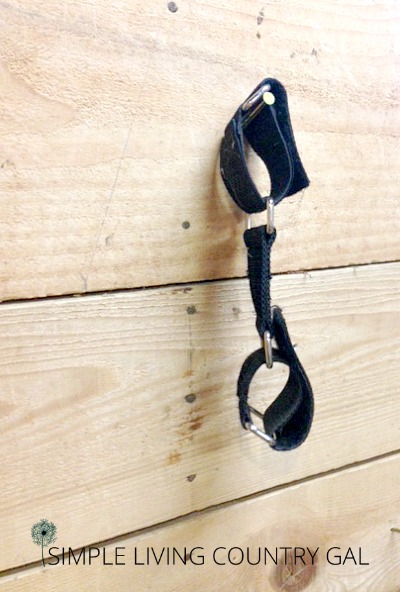
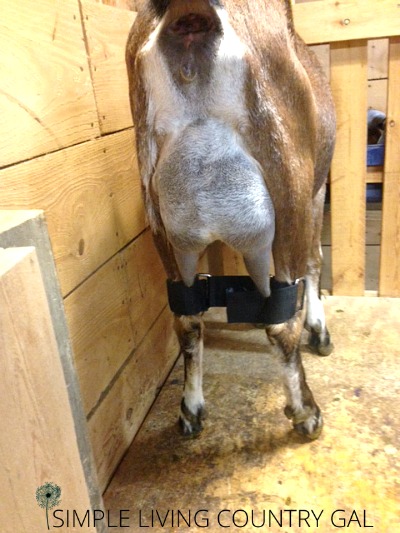
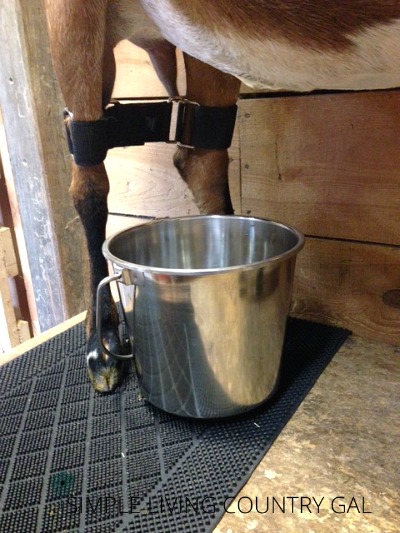
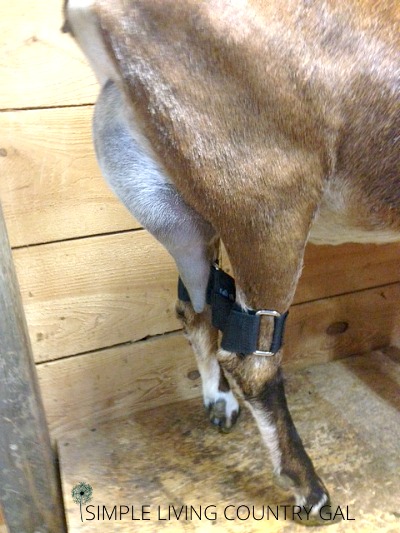
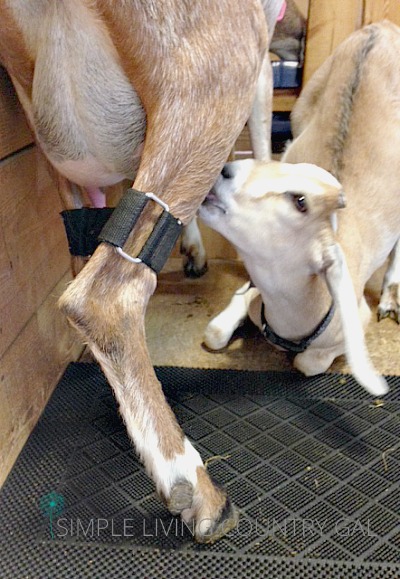
I just bought those & it was a waste, but they don’t work on my Nigerian dwarf does. 🙁 Short legs means even less space above knee, they can fit, but even tightened down (as much as I feel comfortable doing with metal rings against tendons) they’ll shift down over knee in a minute, be kicked off & the jump game begins. So fustrating! This one particular doe won’t feed her 4 babies & I’d milk her for their bottles, but she has been a nightmare on the stand. She is this year’s milking doe for us, so I’ve got to figure something out!
Hi, Dee
How frustrating they do not make hobbles in different sizes. I tend to forget the smaller goats since I have always had the larger breeds. Have you tried to make your own? I have found quite a few examples online. I know it did not work for me, but I have a much larger goat. I do feel your frustration and I hope you are able to figure something out. Goat milking should be fun and enjoyable! Maybe one of her kids will be more docile and a possible family milk goat rather than her?
Best of luck
Tracy Lynn
Caprine Supply sells small hobbles for Nigerians.
Oh that is great to know, Helen!
Thanks
Tracy Lynn
Thank you so much for sharing your experience with these! We haven’t used them before, but I was wondering if they actually worked – and on a difficult goat. Thanks so much for sharing on the Homestead Blog Hop too, I hope we see more great articles from you on Wednesday.
Hi, Kelly!!
It was my pleasure…always fun to be a part of one of the best Homesteading Blog Hops out there!!
Tracy Lynn
So far unable to milk our Kinder . She will jump onto stand for feed with no coaxing If I touch her udder she starts dancing then goes down on all fours . I’ve not been able to do so much as wipe her udder. We’ve been doing this for 4 weeks. I’ve noticed she kicks her baby away when she try’s to nurse.
She’s a sweetheart who loves being brushed, petted , follows me close, comes when she sees me from a distance yet will not have her udder touched.
Will try hobble or wait and milk her baby when she comes to age and weight.
Hi, Nancy,
How frustrating for you! This sounds exactly how Wren used to be in the stand for me. She LOVED to be loved on, but do not touch her udder…like EVER.
The hobbles worked like a charm. I used them to milk and used them to allow kids to suckle.
I hope it helps!
Tracy Lynn
Hi Nancy!
This response is probably too late for you, but I too have a Kinder that either sits down or lays down as soon as I try to touch her udder. I use buckets to keep her up (she ends up looking like she’s draped over them while eating, lol!) – one under her front, just behind her front legs, and one under her tail/rump (she sits on that one). It looks ridiculous, but it’s working so far. My other Kinder, who had NO issues with me rubbing her udder and teats before she kidded, does not like me stealing her kids milk and jumps around and kicks. I’m definitely going to try hobbles on her.